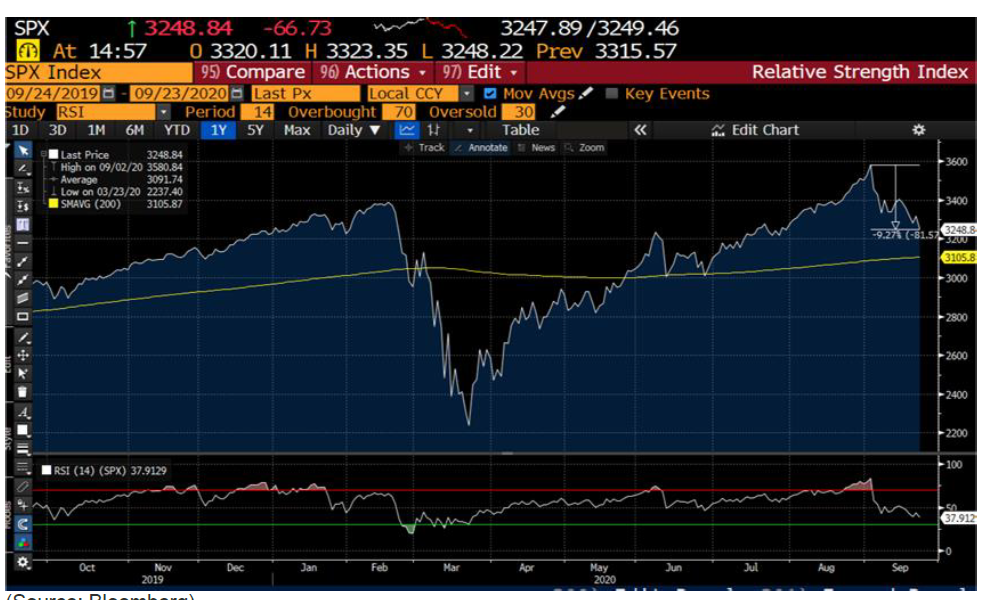The S&P 500 has pulled back almost 10% since the start of the month and we are providing commentary below from Myles Zyblock, Chief Investment Strategist with Dynamic funds. For anyone following our updates this year, this pullback should not come as a surprise in the context of the robust recovery we have seen since March combined with the increase in COVID cases and political uncertainty this month. At its peak on September 2, the S&P 500 was up 7% since January 1st and up 62% from its March 23rd low. Markets overshoot on the way down and on the way up, and since 1920, the S&P 500 has averaged a 10% pullback every 16 months.
We will continue to keep you informed of any major market events. If you have any questions or concerns, please contact us anytime.
(START OF MYLES ZYBLOCK COMMENTARY)
Since reaching an all-time high of 3580 on September 2, the S&P 500 has slid by close to 10% in what has proven to be a challenging month for equity investors. All sectors have fallen into the red over this period, with the Information Technology and Communication Services sectors both declining by just over 12%. Concerns over the stock market’s elevated valuation has been exacerbated by Washington’s political stalemate on a new spending package. Nancy Pelosi has thrown cold water on what was showcased as a $1.5 trillion bipartisan plan which included a second round of $1200 stimulus checks, higher unemployment benefits, and direct aid to small businesses. The Speaker of the House wants something a lot bigger than $1.5 trillion. Tensions on the Hill have only increased with the passing of Justice Ruth Bader Ginsberg and her eventual replacement. Rising COVID-19 case counts in several European countries, like the U.K. and Italy, have added to this sense of unease.

Numerous technical indicators are now closing in on oversold readings and short positioning against the high-flying Nasdaq has surged during the past couple of weeks. It looks as though a lot of bearishness has re-entered the market in very short order. Yet, it is still difficult to know how much more there is to go in this current corrective phase. What we do know is that the nine S&P 500 companies that have reported third-quarter earnings have blown the top off of sales and earnings estimates. Yes, that is a very small sample size. But, we suspect that the ongoing improvements we are seeing in timely activity indicators for production, retail spending, the labor market, and housing point to further earnings progress ahead. Historically speaking, equity market corrections tend to be shorter and shallower during periods of time when the economy and corporate earnings are expanding.
(END OF MYLES ZYBLOCK COMMENTARY)
Source: Dynamic Funds
